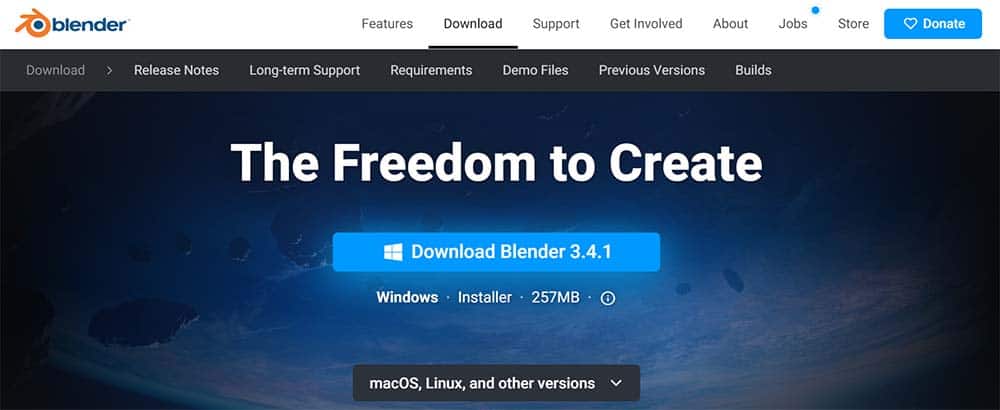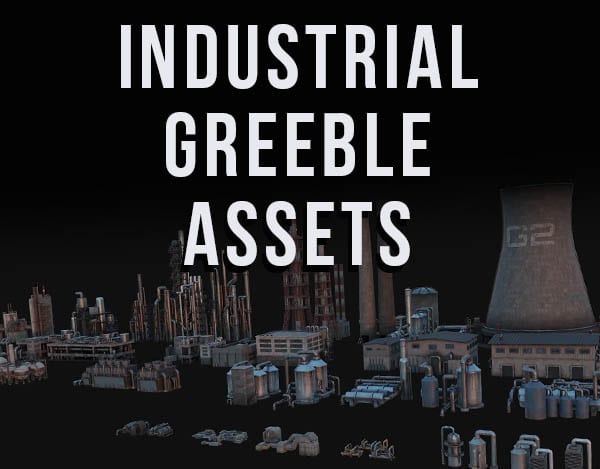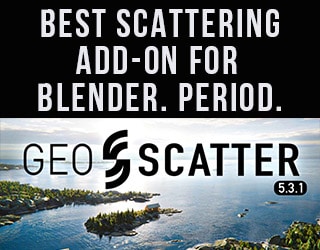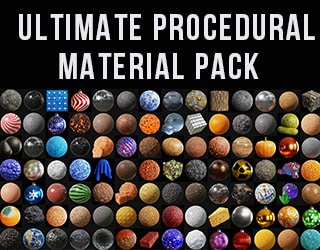Blender is a completely free and open source 3D software. Similar software (Maya, 3DS Max, Cinema 4D) can cost thousands of dollars per year to use. So is Blender really free? And if so, is it because it isn’t as good as the expensive competition? I have the answers!
This page may contain affiliate links which pay me a commission if used to make a purchase. As an Amazon Associate, I earn from qualifying purchases.
Is Blender (Really) Free?
The first question we must answer is whether or not Blender 3D is actually free? And it’s a simple answer.
Yes. Blender is 100% free for all purposes including commercial use. It is not a “freemium” service where we have to pay to unlock certain features. There is no trick here. Blender is free.
Blender is released under a GNU license. This is a special “Open Source” license which means once it is released it can be used by anyone for anything… forever.
How Much Does Similar Software Cost?
Blender is not the only 3D software available. But, look at just how much the programs that are generally considered similar alternatives cost.
This is a major price difference and I know many out there will argue the paid software programs are better… and they’re probably right. But for a program that can do (almost) what the other software does, free isn’t a bad price.
Where to Download Blender for Free
Blender is offered through Steam and other third parties, but the official download page is the most common place to download the official copy of Blender. This will also ensure you are downloading the most current version.
The official download page is blender.org/download

Do not download Blender from other sites and never pay to download Blender.
Are Add-Ons for Blender Free?
Add-Ons are 3rd party plug-ins which add functionality or improve workflow to Blender. They are created by independent developers or members of the community and can be found on Blender Market.
Many add-ons are free, but many are also paid. You do not need add-ons to do anything in Blender but they often speed up the workflow or simplify very complicated processes.
Here I have lists of my favorite free add-ons and my favorite paid add-ons for Blender.
If Blender Is Free, Does it Suck?
Blender doesn’t suck. It has almost all of the tools the expensive 3D programs have. It’s been described as less user-friendly, but the interface continues to improve all the time.
Here are just a few of the things Blender can be used for:
How Can Blender Be Free?
Blender is released under a GNU “Open Source” license and is funded through donations from both individual artists, studios and even some very large corporations. Blender has a very unique back story (keep reading to hear it) in which the Blender Foundation was created.
The Blender Foundation is the non-profit organization which exists to continue development of Blender. Contributions are made to the Blender Development Fund.
Why Would Anyone Donate to Blender?
There are several reasons why individuals and companies donate to the Blender Development Fund. Individuals and small studios who use Blender often embrace the “Blender Community” which is really unique.
Many Blender users are passionate about the concept of having software that can do the same things the giant media corporations can do. As a result, they pitch in to help keep it going.
Some larger companies (Adobe and Nvidia for example) make substantial donations of both money and by lending their developers. Their motivations may be different than the small studios. Because Blender has grown in popularity and seems to be here to stay, they want to ensure their own products are compatible with Blender.
This can be mutually beneficial for Blender users also.
Who Invented Blender 3D?
Ton Roosendaal is credited with creating Blender in 1994 and he is the current Chairperson of the Blender Foundation. While others have certainly contributed over the years, Roosendaal is considered its original creator.
According to Blender.org, Ton Roosendal is a Dutch art director and self-taught programmer.

What is the History of Blender 3D?
Blender is a far cry from what it was when it was created in 1994. This is true for both what the software can do and its purpose.
In 1989 the creator of Blender 3D, Ton Roosendaal, dropped out of college to launch a small 3D animation studio called NeoGeo. At the time, there was no common 3D animation software a small studio could use. So Roosendaal developed the base code for his own 3D software for NeoGeo and this is how Blender began.
According to Blender.org, the first source files for Blender were authored on January 2nd, 1994. This is considered the birthday of Blender. The first official version of Blender (Blender 1.0) was created the following year.
Eventually NeoGeo went out of business. But Roosendaal recognized he was in possession of a 3D software that may be ahead of its time. Roosendaal partnered with Frank van Beek to form a new company called “Not a Number (NaN) in 1998.
Their goal was to further develop and market the Blender software for profit.
Roosendaal and NaN gained the attention of some big investors and they raised more than $5.5 million in private funding for Blender, according to Blender.org.
An interview of Ton Roosendaal by Andrew Price (The Blender Guru) describes the history of Blender.
By his own admission, Roosendaal essentially squandered the raised money. In 2002, NaN shut down and it appeared Blender’s run had come to an end. Rights to Blender now belonged to the NaN investors, but Roosendaal wasn’t ready to give up on it yet.
There was already a good number of people using Blender at the time. Roosendaal proposed a plan to buy the rights to Blender software back from the investors and make it open source and free for the world to use.
Ton Roosendaal launched an early version of modern crowdfunding. He solicited financial donations from the Blender community. Ton founded the Blender Foundation as a non-profit and raised 110,000 euros.
He offered this to the investors and they agreed to sell the foundation the rights to the software.
In 2002, the Blender Foundation released Blender under the GNU General Public License. This is an open-source license which essentially means the following:
The Blender Foundation continues to exist to raise funds to support ongoing development of Blender.
The Blender Institute is the operational organization which builds and develops Blender. In addition to paid full-time and part-time developers, many individual developers have donated their time to work on Blender features.
The Blender Development Fund currently raises enough money to pay approximately twenty developers to release significant updates three times a year.

The Blender Institute hosts the Blender Conference annually in Amsterdam.
The Blender Studio was created to make short films using only Blender as a way to test and demonstrate new features.
Here is one of my favorite Blender open films which many members of the Blender Community helped create:
Paid Versions of Blender?
There are places where you will find paid versions of Blender. Because of the open source nature of the software, nothing restricts anyone from selling the software. There are individuals who unscrupulously will offer the Blender software as a paid product. This is not technically illegal.
For the true and original Blender software, you never need to pay for it!
Paid Versions (Forks) of Blender
Another capability of open-source software is it allows developers to use the source code and alter or improve upon it. These are called “forks” in development.
There are some legitimate fork versions of Blender which have been developed to offer more functionality or which can be used with different render engines.
Frequently Asked Questions
Is Blender 3D Software Open Source?
Blender 3D is truly open-source software. It is licensed under the GNU GPL License. It is guaranteed to remain open source under this license.
Can Blender Be Used for Commercial Purposes?
As an open-source software, Blender can be used for any purpose including commercial use. Anything you create in Blender can be used commercially.
Conclusion
Blender is 100% free to use by anyone for any purpose and it will always be free. It is not a “freemium” software and you will never have to pay to use all of its features. There are paid 3rd party add-ons which enhance the functionality and workflow of Blender.
You can become a supporter of The Blender Development Fund to help continue Blender Development which is all done through the non-profit Blender Foundation.
If you are looking to learn Blender, have a look around my site and my YouTube channel with Blender tutorials. Subscribe to my newsletter for updates and new Blender 3D content.
Get Brandon’s Newsletter
By submitting, you agree to receive periodic e-mails from me. You can unsubscribe at any time.














